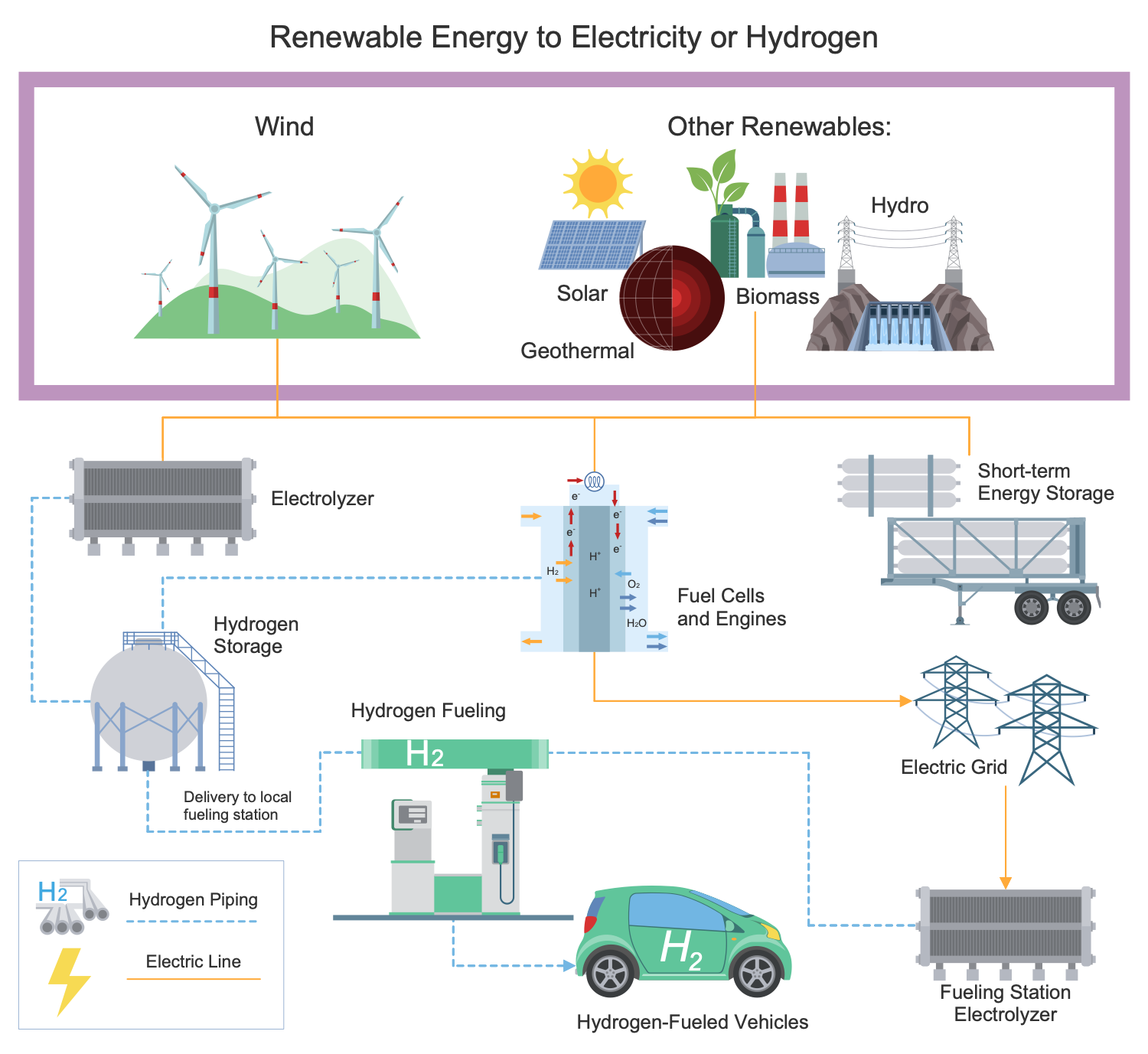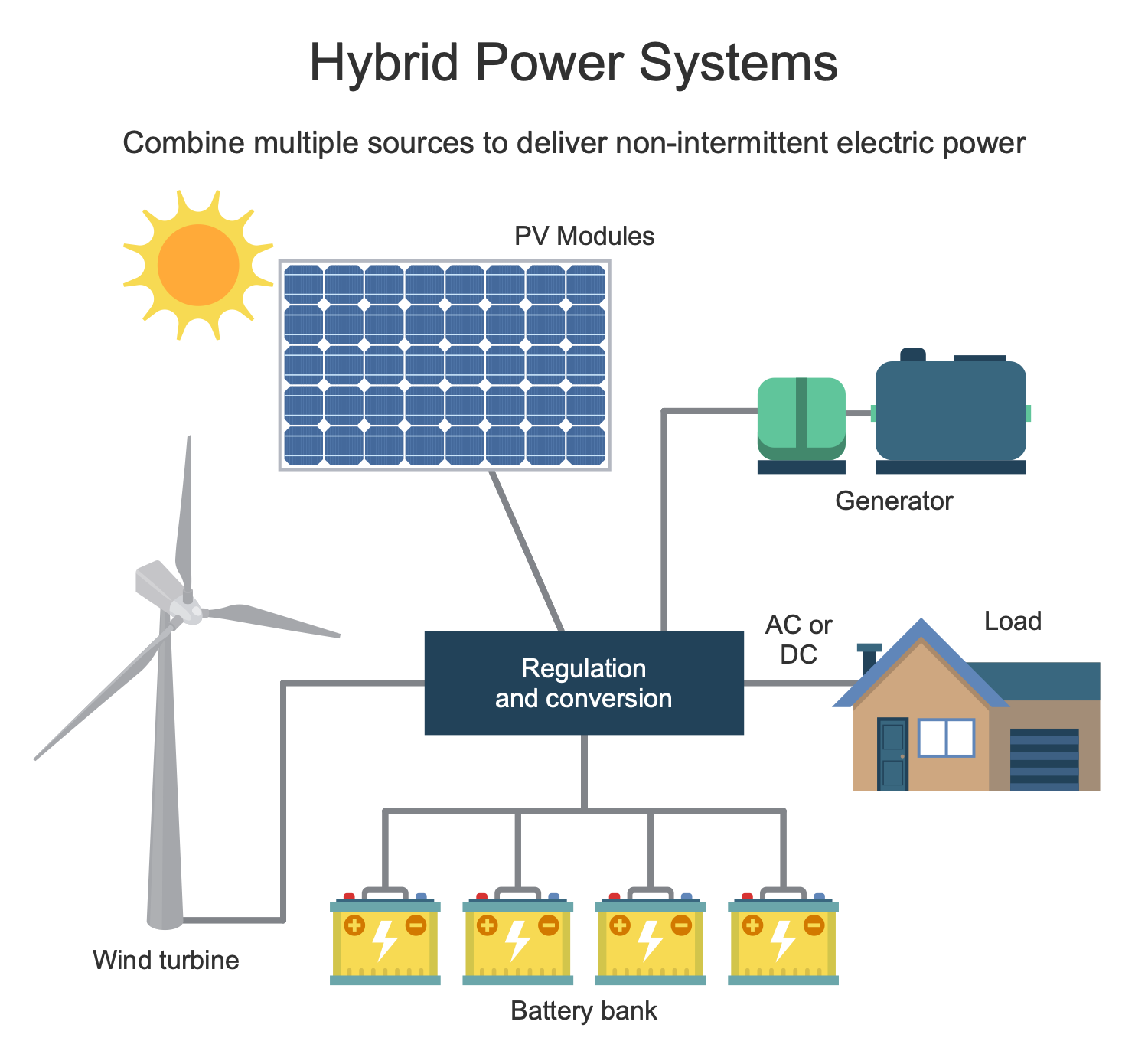Renewable Energy
Renewable energy is energy collected from natural renewable sources, which are constantly naturally replenished over short periods of time. Renewable sources are widely available, non-polluting or have a low environmental impact. Renewable energy has wide applications and is used for electricity generation, air and water heating and cooling, powering stand-alone power systems. They exist over wide geographical areas and are inexhaustible, in contrast to fossil fuels, which are limited and concentrated only in specific areas. Renewables are able to meet the growing demand of people today without denying the ability of future generations also meet their demands.
There are many ways to gather renewable energy. Renewable sources include sunlight, wind, hydro energy, geothermal heat, bio-energy, tidal and wave energy. However, wind and solar energy are the most important and prevalent forms of renewables.
The use of renewables is implemented on both small and large scales, from rooftop solar panels on private homes to ones located on vast territories, giant wind farms, etc.
Transitioning from fossil fuels to renewable energy resources is an ecological way to lower emissions of carbon and other types of pollution, prevent the negative impacts and deal with the climate crisis. Because the active use of cheap and dirty energy sources like coal, gas, and other fossil fuels over the last centuries, lead to harmful greenhouse gas emissions and caused a serious threat to the environment. In this regard, to avoid the world's catastrophic climate change, energy decarbonization should be realized.
Currently, there are a lot of innovative and energy-efficient technologies, which allow capturing energy from sustainable renewable sources in less-expensive ways than before. Therefore, renewable resources become more and more important power sources in many countries worldwide. The modernization of the electricity grid is also realized in order to make it more efficient, secure, environment-friendly, and smarter, reduce climate change, and gain economic benefits.
Global studies showed that a transition to renewable energy across all sectors is economically viable and necessary to save the environment. In addition to environmental benefits, there are also economical ones. Renewable energy is cheaper in most countries and rapidly becomes more efficient. Moreover, its production offers more jobs than fossil fuels. Due to these advantages, renewables increasingly displace fossil fuels in the power sector and their share in total energy increases. A large majority of recently installed electricity capacities are renewable.
Electricity and heating supply become “greener” every year. Currently, the global electricity supply with renewable energy is about 28% and this amount rises from year to year. The rate of solar and wind power rises the most actively.
Renewable energy sources are some of the most important sources of electricity for some countries and are necessary to make them independent of imports of fossil fuels. There are countries generating over half their electricity from renewables, and only a few generate all their electricity as renewable. Most countries have 20% renewable energy in their total energy supply. However, in some countries like, for example, Germany the real amount of renewables in total electricity consumption has already exceeded the estimated one at the current period.

Example 1. Renewable Energy Infographics
Here are the most renewable power technologies:
- Solar energy is the most abundant and reliable of all renewable energy resources. Sunlight is converted into electrical energy through mirrors that concentrate solar radiation or using photovoltaic panels. The only disadvantage is its availability predominately during the daytime and dependence on climate and weather.
- Wind energy offers tremendous potential. The energy of air moved by large blades of tall wind turbines located on land, in the sea, or in freshwater is used to turn a motor, which generates electricity at the top of the tower and transmits it down to the electrical grid.
- Hydropower is one of the most common, reliable, and efficient renewable energy sources. It is gained from the energy of water moving from higher to lower elevations in reservoirs and rivers. The pressure from the water is used to turn turbines and generate electricity. However, hydropower depends on the stability of rainfall.
- Geothermal energy is extracted from the heat in geothermal reservoirs within the Earth’s interior. Geothermal power plants pump large amounts of hot water, from which the steam is generated and turns a turbine in the power plant to generate electricity.
- Bioenergy is produced from biomass including a variety of organic materials, wood, dung, charcoal, agricultural crops, residues from agriculture and forestry, and organic wastes. Their disadvantage is negative environmental impacts through greenhouse gas emissions when burning biomass. However, their amount is greatly lower than those from using fossil fuels.
Example 2. Renewable Power Library Design Elements
Striving to find the best software to design illustrations, infographics and diagrams about renewable resources, turn your attention to ConceptDraw DIAGRAM charting and vector drawing software with powerful Green Energy solution. This solution includes 14 libraries with a large variety of pre-made vector design elements and a collection of predesigned samples. It is ideal to show the advantages of renewable resources, the transformation of renewable energy to electricity or hydrogen, and other issues related to renewables.
Example 3. Green Energy Infographics - Hybrid Power System
The Renewable Energy Infographics samples you see on this page were created in ConceptDraw DIAGRAM software using the drawing tools of the Green Energy Solution. These examples successfully demonstrate solution's capabilities and the professional results you can achieve using it. An experienced user spent 10-15 minutes creating each of these samples.
Use the powerful tools of the Green Energy solution to design your own Green Energy Infographics quick, easy and effective.
All source documents are vector graphic documents. They are available for reviewing, modifying, or converting to a variety of formats (PDF file, MS PowerPoint, MS Visio, and many other graphic formats) from the ConceptDraw STORE. The Green Energy Solution is available for ConceptDraw DIAGRAM users.

